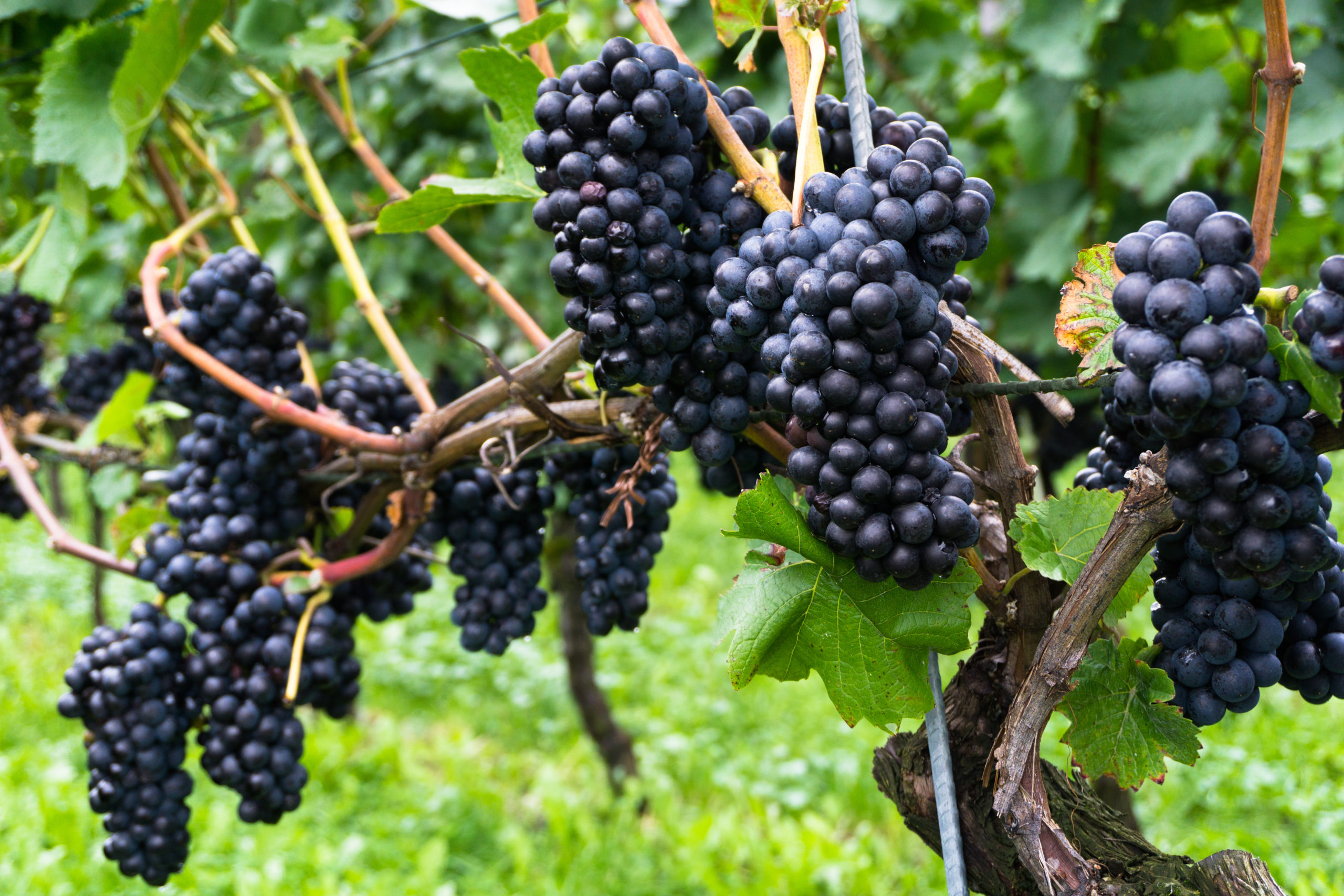Happy International Pinot Noir Day!
In honor of today (and the wine you should be enjoying on such a day) we decided to talk a bit about the ancient Pinot Noir grape.
Wait…ancient?
Yes!
Pinot Noir is one of the oldest grapes, with its DNA dating back at least 2000 years (probably quite a bit more still to be confirmed). This is actually why it’s such a difficult grape to grow. Due to its ancient genetics, it doesn’t have the evolutionary resilience that other grapes like Cab or Merlot have. It itself is a pure, original grape, thus it doesn’t have the genetic strengths that come from cross breeding, both naturally or by hand of man.
That same age has benefits as well though. Pinot Noir has so many different mutations from being so old, there are hundreds of different clones worldwide. Aside from Pinot Noir clones, the other mutations of Pinot Noir are standardized, named, and sought after: Pinot Gris (Grigio), Pinot Blanc, and Pinot Meunier (a favorite for all our Champagne fans around the world).
Another cool factor of Pinot Noir’s age is its parentage to a number of other grape varieties – when you’ve been around this long, people are bound to have crossed and experimented with you a bit. Gamay, Aliogté, Chardonnay and Pinotage are just a few varieties of grapes owing parentage to Pinot Noir that come immediately to mind.
And with great age, comes many titles. Pinot Noir is also known as Spätburgunder, Pinot Nero, Blauburgunder, and Morillon just to name a few. Generally the namesake is regionally appropriate to the native language.
Did you know Pinot Noir translates to Black Pine? The French naming illustrates the pine cone-like shape the grape clusters make and reference the very dark skin of the grape. Sadly though, these tight pack clusters are another potential downfall of this ancient grape. If a mold gets in, it can take over and spread very easily because of the lack of space between each piece of fruit.
Pinot Noir has rightly earned its nickname as the heartbreaker grape, as many fortunes were destroyed by a bad crop or persistent disease when trying to establish a Pinot crop. This too is due to the ancient DNA of the grape and its inability to fight modern pests and rot.
All these possible difficulties in growing Pinot Noir make for a more expensive bottle of wine. There is a level of production and care that go into Pinot that command a bit more production costs at the end of the day, even a routinely low yield of fruit due to losses through the growing season, that get translated into the bottle price. Cab from Napa is expensive because of pedigree and location and marketing, Pinot from anywhere is expensive because it’s just simply difficult to grow.
Now paying a bit more for Pinot isn’t all that bad, largely due to the grape essentially being the definition of terroir! Again, due to ancient DNA, Pinot Noir is highly affected by its environment from thin skins that allow all sorts of outside influence in, down to the roots that really take on the taste of the land. French writer Bernard Pivot said when speaking of “climat” the French do not raise their eyes to the sky, we drop them on the ground. Quite poetic honestly. But, then again, we’re huge Pinot Noir geeks here at Cameron Hughes.
Cheers to International Pinot Noir Day! Now go pop some Bourg (or Champagne)!

